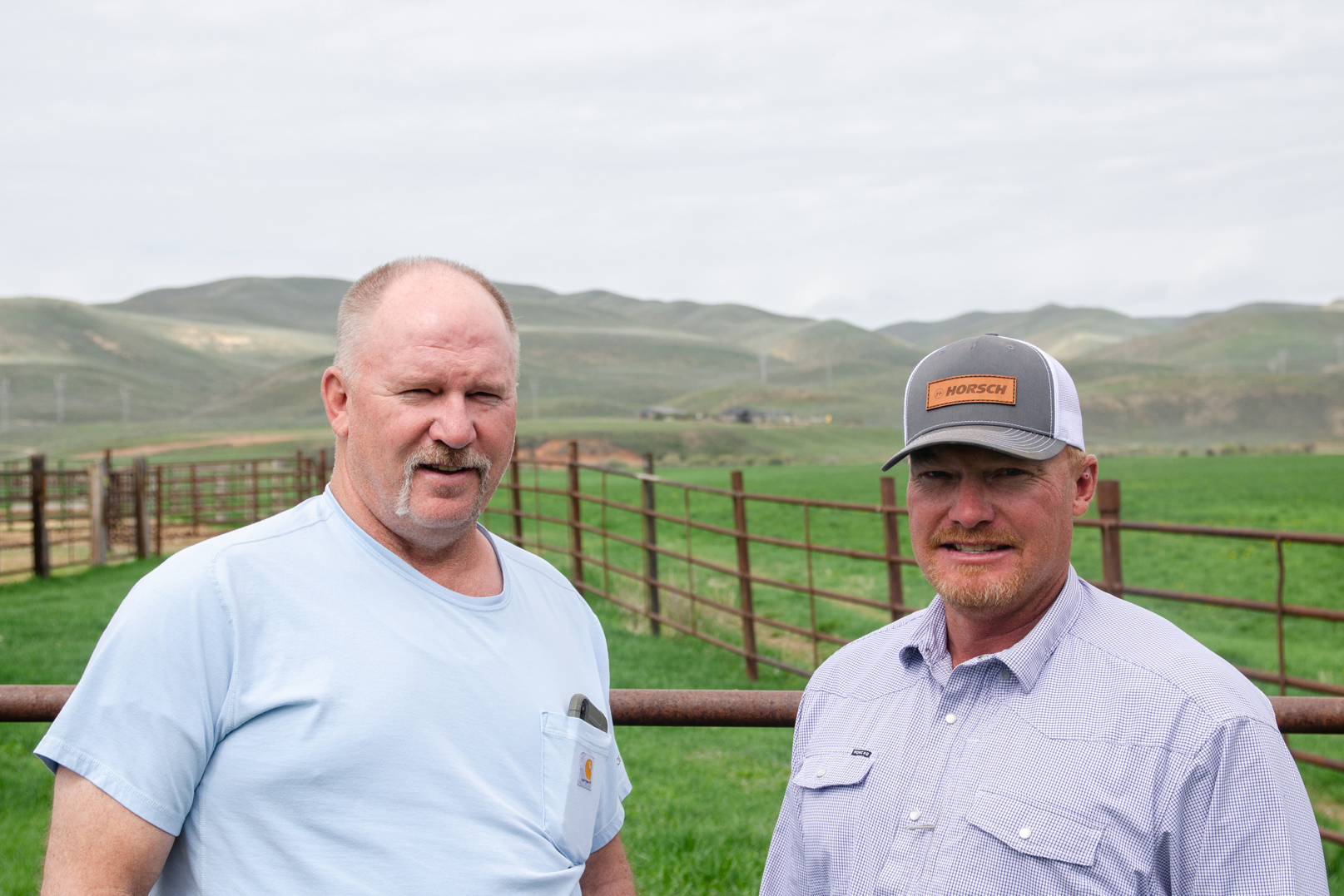A coalition of trade union groups called Thursday on the states of Massachusetts, Rhode Island and Connecticut to sharply increase their goals for developing offshore wind power over the next 15 years to help meet climate goals and boost their economies.
The groups urged the states to set a target of generating 30 gigawatts of power from wind farms off the coast of southern New England by 2040, more than three times as much as their current combined target of 9 GW by 2030, and the same amount as the Biden administration’s national goal by that year. If achieved, the 30 GW target would meet all of the region’s retail electricity demand, and ensure that the current goal is achieved, the groups said in a report.
The higher proposed target was chosen because of rising demand for electricity and the need to set up a domestic supply chain at scale. It was also driven by the potential for wind energy in the North Atlantic area that is much greater than state targets, union officials said.
Southern New England has experienced the most severe average temperature increases in the nation, already surpassing the Paris Agreement’s goal to limit warming to 1.5 degrees Celsius, and does not have enough land to meet its renewable energy targets with only onshore wind and solar power, the groups argue in the report.
Fifty-five percent of the region’s electric power currently comes from gas, according to the report, and only 4 percent comes from wind and 4 percent from solar.
“Union labor is the foundation on which the offshore wind industry must be built,” Rhode Island AFL-CIO President Pat Crowley said in a statement. “In order to build a clean energy industry that centers working people and takes on the climate crisis, we need strong labor standards and coordinated regional investments in a domestic supply chain.”
By 2050, the report advocates that the states double their goal again to 60 GW, which would allow the region to export offshore wind energy.
It called on the states to invest in ports, manufacturing, transmission and specialized vessels to install giant wind turbines. Port upgrades are needed for offshore wind construction, operations and maintenance, and domestic manufacturing should be strengthened so that some offshore wind components don’t have to be shipped across the Atlantic from Europe, the report said.
It also called for the creation of a regional electric transmission system that ends the need for each offshore wind project to build its own power line connecting to the onshore grid.
Eric Hines, a professor of practice, civil and environmental engineering at Tufts University, said in the report’s introduction that U.S. energy planners have erred in assuming that a global supply chain could meet the nation’s need for wind energy components, producing delays currently extending into the 2030s. He also said lack of domestic production also threatened a U.S. role in the emerging high-voltage direct current (HVDC) electricity transmission market.
“Why wouldn’t we see this as a golden opportunity to build our own?” he said.
The proposed increase in offshore wind would be helped by tax incentives under the federal Inflation Reduction Act, which the report said is “transforming” U.S. energy supply by providing long-term support for clean-energy production, as well as related manufacturing and infrastructure.
Kris Ohleth, director of the Special Initiative on Offshore Wind, a policy think-tank that advises state and federal governments, said the plan was ambitious and necessary. “While aggressive, this is the type of bold leadership needed to address the combination of increasing electricity demand and the intensification of the impacts of climate change,” she said.
The 83-page report argued that the federal government would need to join the states in increasing investment in the offshore wind supply chain, despite expectations that the incoming Trump administration will be less supportive to offshore wind than the Biden administration. Crowley argued that the expected decline in federal support for offshore wind increases the need for states to cooperate in building and buying more offshore wind. “We know that a Trump administration may be more hostile to offshore wind, but that’s why state leadership is even more important now than ever,” he said.
According to American Clean Power, an advocacy group for renewable energy, 56 GW of offshore wind—enough to power 22 million homes—are currently being developed in U.S. waters, easily exceeding the Biden administration’s target for 2030.
The call comes some two months after Massachusetts and Rhode Island selected offshore developers to contribute a total of 2.9 GW of offshore wind power—the region’s biggest procurement so far—from local projects. Massachusetts committed to buying all but 200 megawatts of the power in the latest selection; it is required by state law to contract for 5.6 GW by 2027.
But Connecticut declined to participate in the selection even though it agreed with the other states last year to cooperate in the purchase of offshore wind power to seek economies of scale and cost savings.
On Thursday, spokespeople for Massachusetts and Connecticut declined to say whether their states would consider raising their offshore wind targets, or whether the proposed goals were feasible in the time specified. A spokesperson for Rhode Island did not respond to a request for comment.
Will Healey, speaking for Connecticut’s Department of Energy and Environmental Protection, said state law requires the state to buy 2 GW of offshore wind, and that any changes would require new legislation.
“The report does not appear to propose a specific allocation of its proposed procurement level to individual states, so further details would be needed from the authors to determine what additional authorizations might be required in Connecticut,” he said.
Connecticut remains “supportive” of offshore wind as part of a mix of energy sources that are affordable, reliable and clean, Healey said.
A spokesperson for the Massachusetts Executive Office of Energy and Environmental Affairs said officials are reviewing the union report, and that Gov. Maura Healey will be speaking next week at an offshore wind event featuring the report’s authors.
“Offshore wind is driving economic prosperity across New England by creating thousands of good-paying union jobs, revitalizing ports, and growing regional manufacturing for our domestic supply chain. The Healey-Driscoll Administration has taken significant action to advance the industry, including selecting three new projects in our most recent procurement and breaking ground on the second dedicated offshore wind port in Salem. American energy independence will be made possible through a strong offshore wind industry and we look forward to continued advancements in this industry,” the spokesperson said.
The report from the groups Climate Jobs Massachusetts; Climate Jobs Rhode Island; and the Connecticut Roundtable on Climate and Jobs argued that the effects of climate change require additional clean-energy action by the states. “Climate change is a relentless threat to the people of southern New England,” it said. “The region must build and deploy clean energy at the scale and speed that climate change demands.”
About This Story
Perhaps you noticed: This story, like all the news we publish, is free to read. That’s because Inside Climate News is a 501c3 nonprofit organization. We do not charge a subscription fee, lock our news behind a paywall, or clutter our website with ads. We make our news on climate and the environment freely available to you and anyone who wants it.
That’s not all. We also share our news for free with scores of other media organizations around the country. Many of them can’t afford to do environmental journalism of their own. We’ve built bureaus from coast to coast to report local stories, collaborate with local newsrooms and co-publish articles so that this vital work is shared as widely as possible.
Two of us launched ICN in 2007. Six years later we earned a Pulitzer Prize for National Reporting, and now we run the oldest and largest dedicated climate newsroom in the nation. We tell the story in all its complexity. We hold polluters accountable. We expose environmental injustice. We debunk misinformation. We scrutinize solutions and inspire action.
Donations from readers like you fund every aspect of what we do. If you don’t already, will you support our ongoing work, our reporting on the biggest crisis facing our planet, and help us reach even more readers in more places?
Please take a moment to make a tax-deductible donation. Every one of them makes a difference.
Thank you,
















